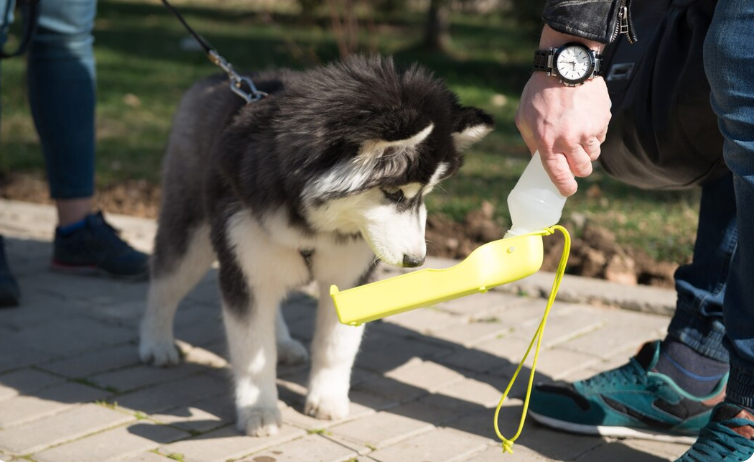
Training your puppy in basic obedience is one of the most rewarding aspects of dog ownership. Not only does it establish a foundation for good behavior, but it also strengthens the bond between you and your furry friend. From teaching your puppy to sit and stay to more advanced commands like come and leave it, a consistent and reward-based approach ensures long-term success. This comprehensive guide will walk you through essential obedience commands, training techniques, common challenges, and tips to help your puppy grow into a well-behaved adult dog.
Why Basic Obedience Training Matters
Training your puppy in basic obedience is not just about commands; it’s about communication. Obedience training:
- Builds trust and understanding.
- Ensures your puppy’s safety in various environments.
- Prevents behavioral issues.
- Encourages positive socialization with other dogs and people.
- Establishes you as the confident and loving leader.
Early training also sets the stage for more advanced skills and activities, such as agility, therapy work, or advanced tricks.
The Best Time to Start Obedience Training
Puppies are most receptive to training between 8 and 16 weeks of age. During this critical developmental window, they are curious, eager to please, and less likely to be fearful. However, it’s never too late to start training—older puppies and even adult dogs can benefit greatly from consistent, positive reinforcement.
Getting Started: Essentials for Obedience Training
Before diving into specific commands, make sure you have the following training essentials:
- Treats: High-value, bite-sized treats for rewarding good behavior.
- Clicker: Optional tool for clicker training to mark desired behavior.
- Leash and Collar: For control during training sessions.
- Patience and Consistency: Key ingredients to any successful training program.
- Quiet Environment: A distraction-free space helps puppies focus during early training.
1. Sit
Why it matters: The sit command is a basic yet crucial behavior that helps control your dog in various situations.
How to teach it:
- Hold a treat close to your puppy’s nose.
- Move your hand up, allowing their head to follow the treat, which causes their bottom to lower.
- Once they’re in a sitting position, say “Sit,” and give the treat.
- Repeat several times every day.
2. Stay
Why it matters: The stay command helps your dog remain in place, which is vital for safety.
How to teach it:
- Ask your dog to sit.
- Open your palm in front of you and say “Stay.”
- Take one step back, then return and reward.
- Gradually increase the distance and time before giving the reward.
3. Come
Why it matters: Teaching your puppy to come when called can prevent accidents and improve control.
How to teach it:
- Put your puppy on a long leash.
- Crouch down to their level and say “Come” while gently pulling the leash.
- When they come to you, praise and treat.
- Practice in a safe, enclosed area.
4. Down
Why it matters: This command helps settle your dog and is a gateway to impulse control.
How to teach it:
- Ask your puppy to sit.
- Hold a treat near their nose and move it slowly to the ground.
- As their body follows the treat into a lying position, say “Down.”
- Reward and praise.
5. Leave It
Why it matters: Prevents your dog from picking up harmful or unwanted items.
How to teach it:
- Show your puppy a treat in one hand and say “Leave it.”
- Close your hand and wait until they stop trying.
- When they look away, praise and offer a different treat from the other hand.
Training Tips for Success
- Keep sessions short: Puppies have short attention spans; 5–10 minutes is plenty.
- Be consistent: Use the same command words and hand signals.
- Use positive reinforcement: Reward good behavior instead of punishing mistakes.
- Train in different environments: Gradually introduce distractions to build real-world reliability.
- End on a positive note: Always finish training with a success and reward.
Troubleshooting Common Training Issues
- Puppy won’t listen: Try increasing the value of the reward or reduce distractions.
- Too hyper to focus: Let your puppy burn off energy through play or a short walk first.
- Inconsistent response: Make sure everyone in the household is using the same commands and techniques.
Advanced Training Beyond Basics
Once your puppy masters the basics, you can progress to more advanced commands:
- Heel: Walking calmly by your side.
- Wait: Holding off from eating or exiting doors.
- Place: Going to a specific spot and staying there.
- Roll Over, Shake, Speak: Fun tricks that strengthen your bond.
The Role of Puppy Classes and Trainers
Professional puppy classes can fast-track your dog’s training success. Benefits include:
- Expert guidance
- Structured socialization
- Learning in a controlled environment
- Opportunities to ask questions and get feedback
If you’re struggling, consider a certified dog trainer who uses positive reinforcement methods.
Creating a Weekly Training Schedule
A simple weekly schedule ensures consistent progress. Here’s a sample:
- Monday: Sit, Stay (5 mins each, twice)
- Tuesday: Come, Down
- Wednesday: Leave it, Sit-Stay combo
- Thursday: Review and reinforce all commands
- Friday: Practice in a new environment (e.g., park)
- Saturday: Puppy class or socialization walk
- Sunday: Play day and mental enrichment
Using Training to Build a Lifelong Bond
Training sessions are more than behavior lessons—they’re moments of bonding, communication, and mutual understanding. Puppies trained with kindness and consistency grow into dogs who are confident, well-mannered, and eager to please.
Conclusion
Basic obedience training is the first step toward a fulfilling life with your puppy. By teaching commands like sit, stay, come, and more, you’re not only shaping your puppy’s behavior—you’re building a language of love and trust. With consistency, patience, and lots of positive reinforcement, your puppy will become a well-behaved companion ready to face the world with confidence.
Start small, keep it fun, and celebrate every success. Happy training!